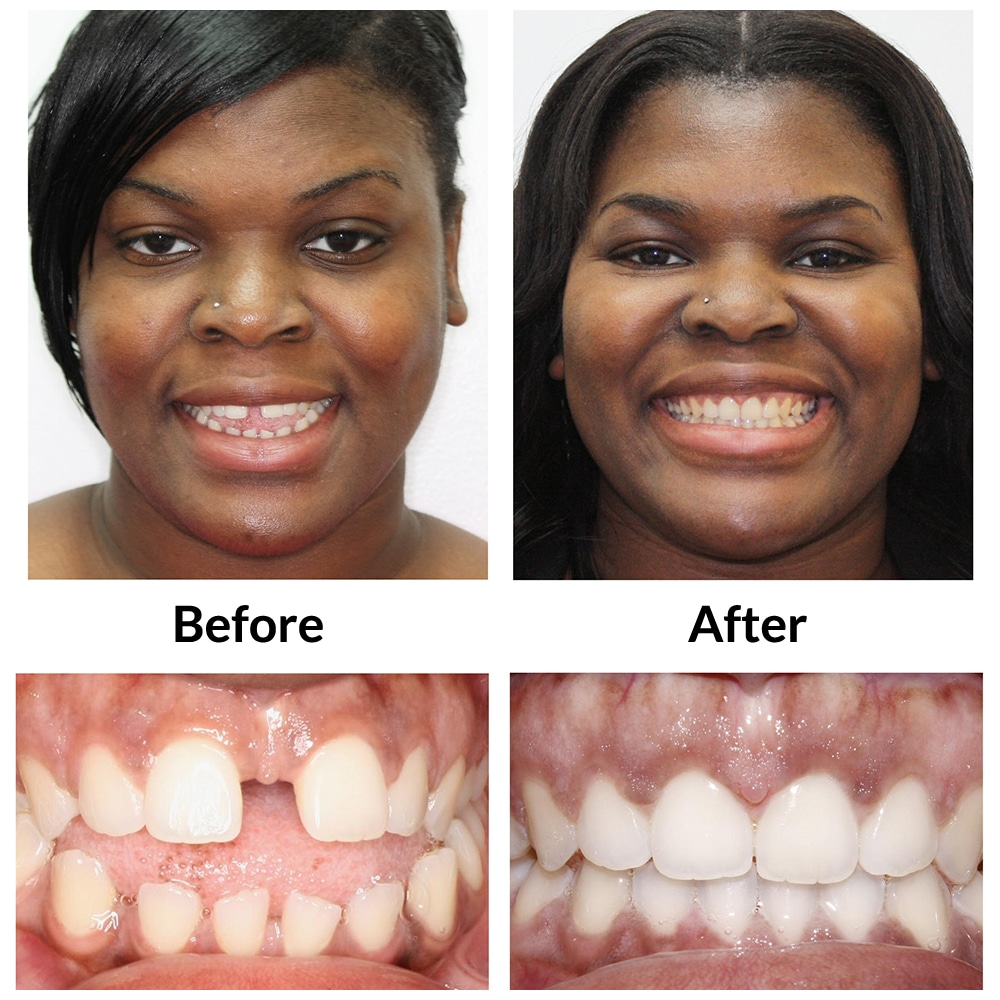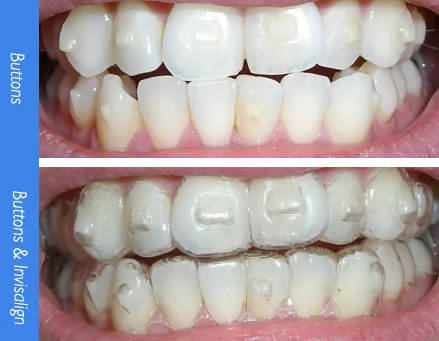Success Stories: How Invisalign Changed Lives and Enhanced Confidence
Success Stories: How Invisalign Changed Lives and Enhanced Confidence
Blog Article
Invisalign vs. Typical Dental braces: Which Option Is Right for You?
When thinking about orthodontic treatment, the choice in between Invisalign and conventional dental braces presents several crucial aspects that warrant mindful assessment. Invisalign provides a very discreet option with detachable aligners, while typical braces offer an extra visible yet efficient service for severe misalignment.
Overview of Treatment Choices

On the other hand, conventional dental braces include metal brackets and cords that are adhered to the teeth. This technique uses constant stress gradually to attain alignment. While effective for intricate orthodontic issues, standard dental braces require normal gos to for adjustments and can present obstacles in maintaining oral health because of the trouble of cleaning up around cords and braces.
Both options have their values, and the selection usually depends upon particular dental problems, lifestyle preferences, and client conformity. Inevitably, seeking advice from an orthodontic expert is crucial for identifying one of the most ideal therapy plan customized to individual demands. Comprehending the subtleties of each choice can substantially affect the total success of orthodontic treatment.
Aesthetic Considerations
A substantial aspect influencing the selection between Invisalign and conventional dental braces is the visual appeal each treatment offers. Invisalign aligners are crafted from clear plastic, making them essentially undetectable when used. This discreet appearance is especially appealing to adults and teenagers that may feel self-conscious about their orthodontic treatment. The ability to maintain a natural smile throughout the placement process can substantially enhance the person's confidence in social and expert settings.
On the other hand, typical braces contain metal brackets and cords, which can be more obvious. While developments in orthodontic modern technology have caused the development of smaller braces and colored elastics, traditional dental braces still maintain a more obvious account. For some individuals, the visibility of braces may deter them from seeking necessary therapy.
Eventually, the selection in between Invisalign and standard braces might depend upon individual choices relating to aesthetics. People that focus on discernment often favor Invisalign, while those that are much less concerned concerning visibility may decide for typical braces. Comprehending the visual ramifications of each choice is critical for making a notified decision that straightens with one's way of living and choices.
Comfort and Convenience

In terms of benefit, Invisalign aligners are removable, enabling clients to enjoy their favorite foods without restriction and preserve optimal oral hygiene. Cleaning and flossing are simplified, as the aligners can be taken out throughout these regimens, whereas traditional braces call for mindful maneuvering around wires and brackets.
In comparison, typical dental braces demand routine adjustments, making them less hassle-free for those with active routines. In general, the convenience and comfort of Invisalign make it an appealing option for several people seeking orthodontic treatment.
Treatment Duration and Performance
While both Invisalign and standard braces are effective in fixing dental imbalances, the duration of treatment can vary considerably in between both options. Commonly, Invisalign treatment can take anywhere from 12 to 18 months, depending on the complexity of the case. The clear aligners work by progressively changing teeth into their desired settings, and routine follow-ups with an orthodontist assistance make certain development remains on course.
In comparison, traditional dental braces typically need a longer commitment, typically varying from 18 months to 3 years. This is because of their set nature and using cables and brackets, which can be extra efficient for intricate cases and extreme misalignments (Invisalign). The treatment effectiveness of typical braces is well-documented, as they enable for accurate modifications and greater control over tooth movement
Ultimately, the selection in between Invisalign and conventional dental braces might depend upon both the expected therapy duration and the specific dental issues available. Consulting with an orthodontist is vital, as they can offer customized referrals based on specific needs, making certain the picked technique straightens with preferred outcomes and durations.
Cost Comparison and Insurance Alternatives
Cost plays a considerable function in the decision-making process for individuals thinking about orthodontic therapy, whether choosing Invisalign or standard dental braces. Usually, the price of Invisalign varieties from $3,000 to $8,000, while traditional braces usually cost between $2,000 and $6,000. Factors affecting these blog costs include the complexity of the instance, the period of therapy, and geographical area.
Insurance coverage can significantly influence out-of-pocket expenses. Lots of oral insurance strategies offer partial coverage for orthodontic treatments, yet the specifics can vary widely. It is essential for patients to review their insurance coverage to determine the extent of coverage for either option. Typically, typical braces may be much more frequently covered by insurance policy strategies compared to Invisalign, which some insurers categorize as an aesthetic treatment.
In addition, numerous orthodontic practices provide adaptable settlement strategies, making both therapy choices a lot more obtainable. Individuals must make inquiries about prospective funding options and price cuts for upfront payments. Assessing the overall cost, consisting of insurance coverage advantages and settlement strategies, is important for making an informed decision that aligns with both visual preferences and budget factors to consider.

Verdict
In summary, the selection in between Invisalign and typical dental braces depends upon numerous variables, including visual preferences, convenience, therapy duration, and cost. Invisalign supplies a very discreet, detachable option that helps with dental hygiene and dietary flexibility, while typical dental braces might be more suitable for intricate oral problems and usually come at a lower price factor. Ultimately, examination with an orthodontist is important to evaluate private conditions and identify the most proper therapy option for attaining optimum oral placement.
When considering orthodontic therapy, the choice between Invisalign and traditional dental braces presents numerous right here vital aspects that merit careful check my source analysis.Comparing Invisalign and conventional braces exposes distinct treatment options for orthodontic improvement.While both Invisalign and traditional braces are effective in fixing oral misalignments, the period of therapy can vary considerably between the two options.Cost plays a substantial function in the decision-making procedure for people considering orthodontic therapy, whether choosing for Invisalign or typical braces.In recap, the choice between Invisalign and traditional braces hinges on numerous aspects, consisting of visual preferences, comfort, therapy period, and cost.
Report this page